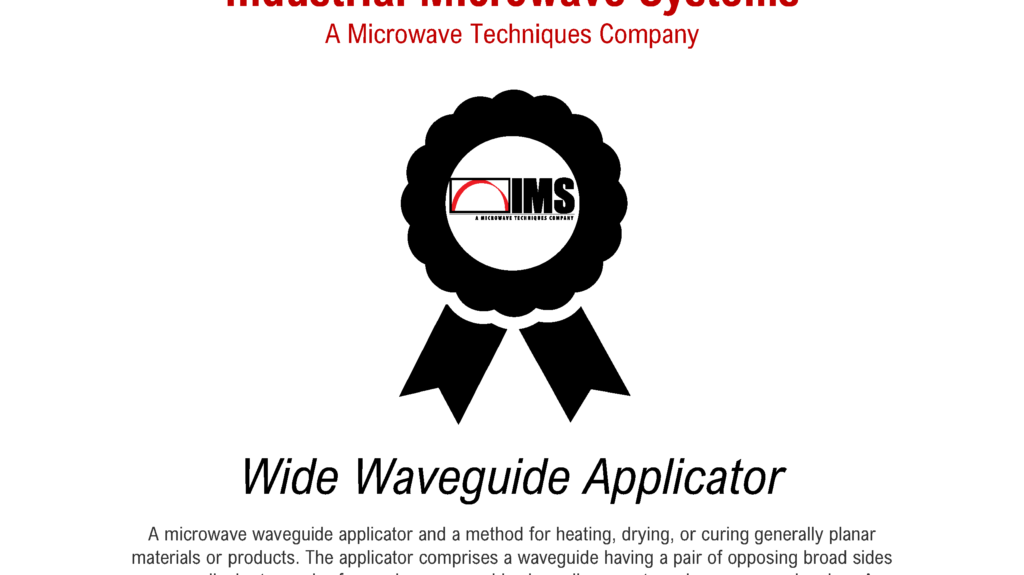Industrial Microwave Systems (IMS) is recognized for its patented microwave technology involving the design of a wide waveguide applicator. A microwave waveguide applicator and a method for heating, drying, or curing generally planar materials or products. The applicator comprises a waveguide having a pair of opposing broad sides perpendicular to a pair of opposing narrow sides bounding a rectangular exposure chamber. A microwave source generates and propagates microwaves through the chamber in a propagation direction and with an electric field generally directed from one broad wall to the other. Slotted openings in the narrow sides act as entrance and exit ports for a conveyor transporting a product along a conveying path through the chamber perpendicular to the propagation direction and perpendicular to the electric field. The waveguide may be ridged to focus or bend the electric field, especially for heating thin materials.
The IMS Wide Waveguide Applicator
The invention relates generally to microwave heating, drying, and curing and, more particularly, to rectangular waveguide applicators and methods for exposing a generally planar, broad product area to microwave energy.
Rectangular waveguide applicators are used to heat, dry, and cure a variety of materials and products. In axial applicators, products to be exposed to microwave energy are conveyed along the length of the microwave applicator in or opposite to the direction of microwave propagation. But, with axial applicators, the width of the product that can be conveyed into the applicator is limited by the width of the waveguide.
To overcome the width limitation of axial applicators, a rectangular waveguide slotted along its broad faces allows product to be conveyed through the waveguide along a path perpendicular to the direction of microwave propagation with the electric field generally in the plane of the product. The length of such an applicator can be made long to accommodate wide products. Because more microwave energy is absorbed by the product along the side closer to the source of microwave energy, heating is highly non-uniform in a single pass.
Consequently, it is common to arrange a number of passes in a serpentine arrangement to make the heating across the width of the product more uniform. Serpentine applicators work well with thin wide materials or products. But, thick products or very damp products attenuate the microwave energy along the propagation path so much that most of the energy is absorbed by the product closest to the microwave source. Thus, there is a need for a microwave applicator that can uniformly heat thick or damp wide products and materials.
Wide Waveguide Applicator (PDF)


